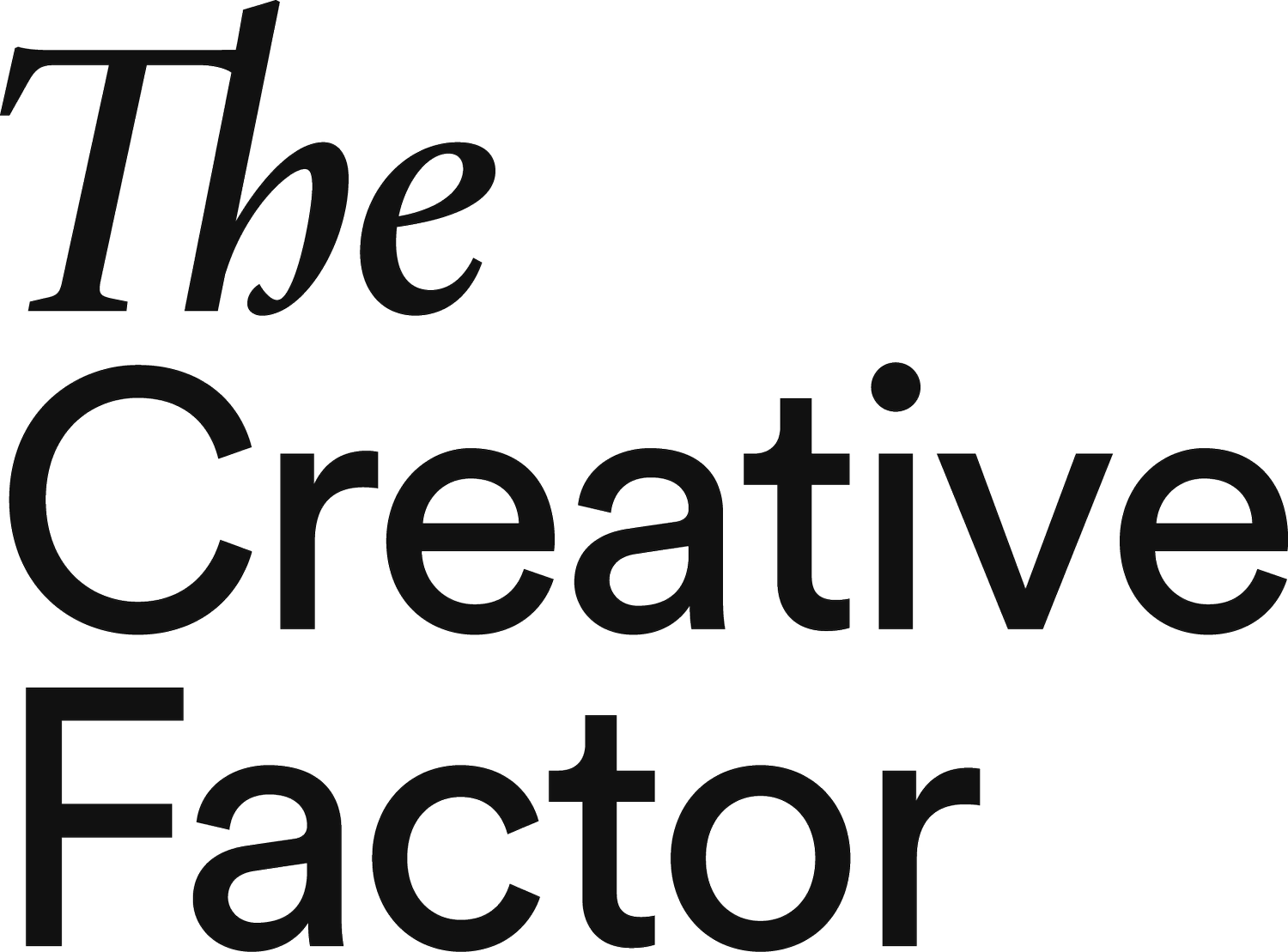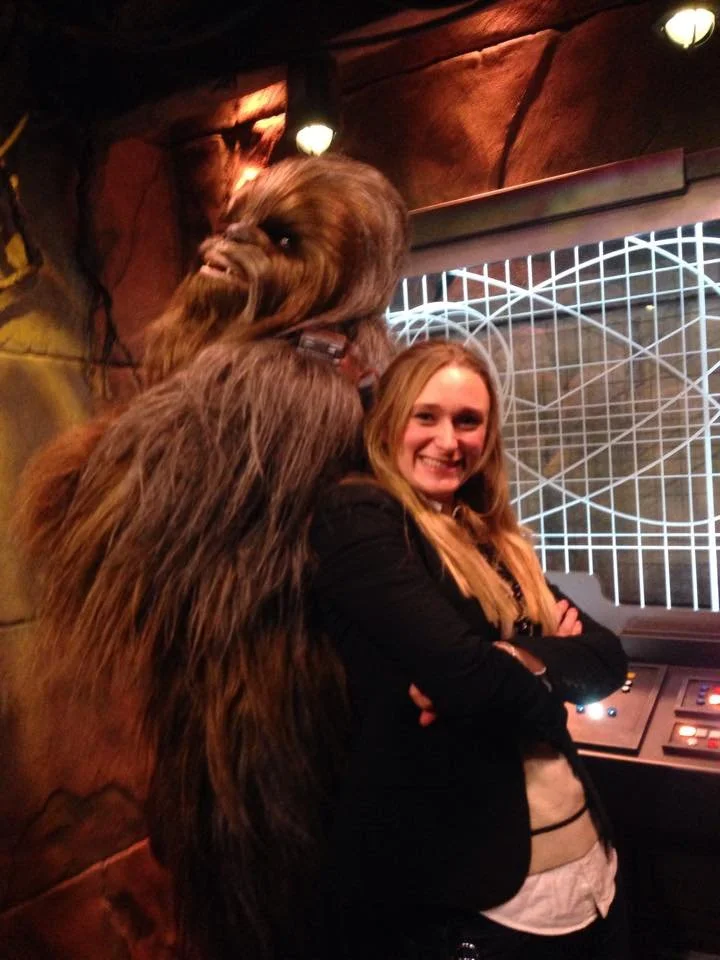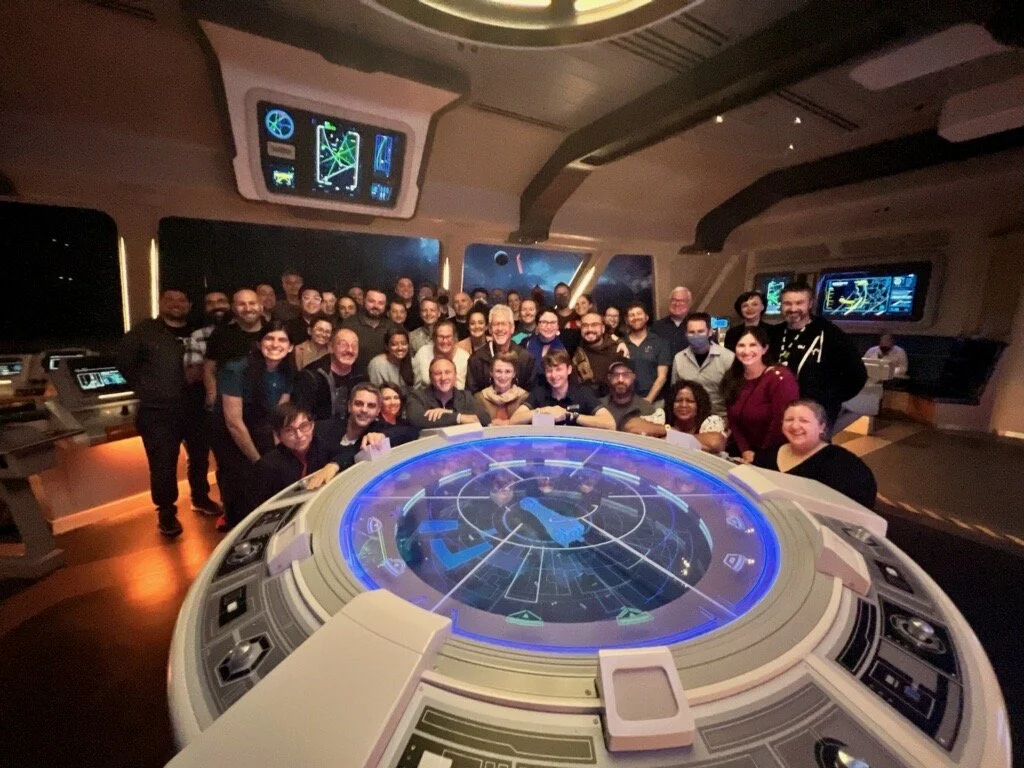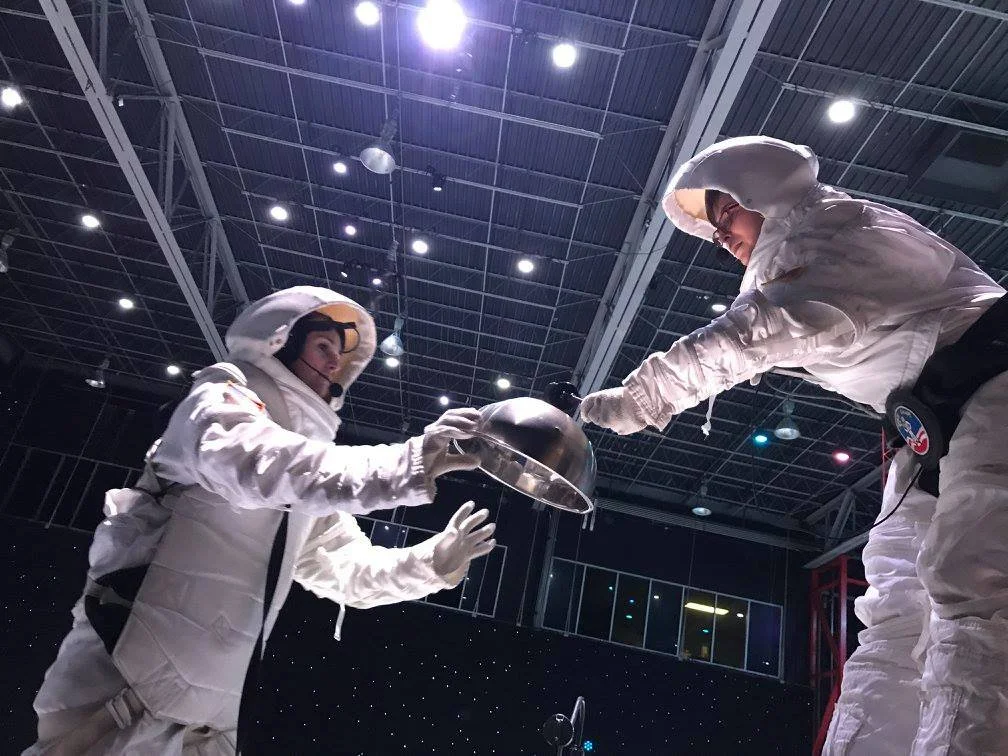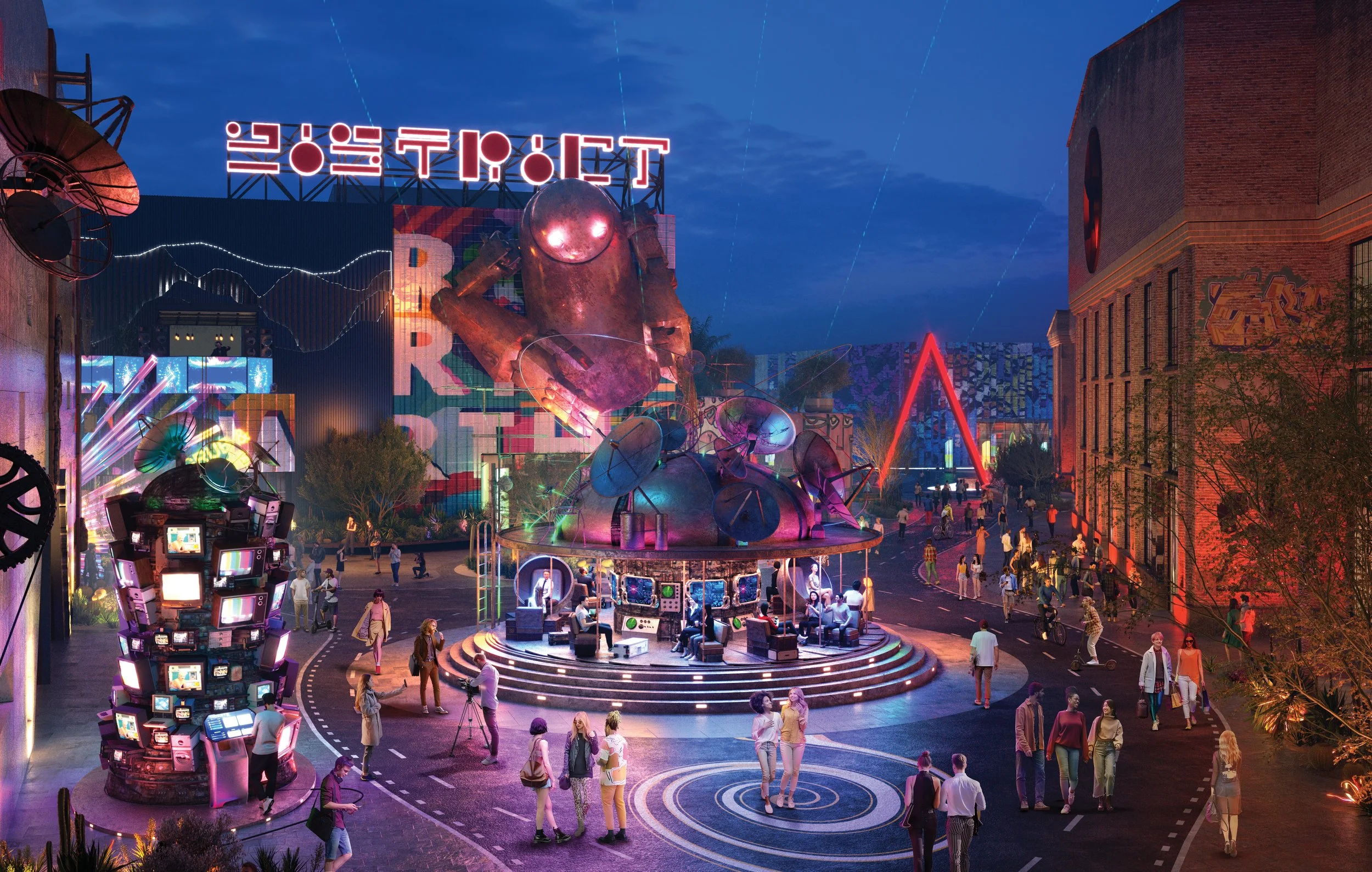Executive Ranks: Lessons in Leadership from Gensler’s Ann Morrow Johnson
We caught up with Johnson on how she’s navigated the climb from creative contributor to executive leader. Images c/o Gensler.
When Ann Morrow Johnson sat down for this interview with us, it was on her Peloton. More than just an exercise break in the middle of her workday, this is Johnson’s preferred way of working. Where she used to do West Wing-style walk and talks with team members, wandering around campus or on a job site to work through her thoughts, she now mixes a stationary bike with a Zoom call. A true leader never rests; they mostly just pause…
As the Immersive Experience and Entertainment Practice Leader at Gensler, Johnson’s work involves both leading teams across the 53 offices around the globe, as well as world-building for clients like National Geographic, AREA15, and the Royal Shakespeare Company. Before Gensler, she led Creative Development at Walt Disney Imagineering, as well as multiple Star Wars projects across Parks and Resorts.
One of our beliefs at the Creative Factor is that there should be more creative people leading and launching companies, institutions, and even government agencies. Creative leaders are not just visionaries but strategic problem solvers. But the thing is, there’s no playbook for creative work. You can’t get a degree in creative leadership or follow a linear career path to get there.
We spoke to Johnson about her view on this topic, including the path she has taken to get to where she is; the tools and tactics she uses in her work; the insights she’s gained along the way; and even the things that didn’t quite go right, but helped shape how she leads today.
Johnson’s work at Disney Imagineering involved everything from brushing Chewbacca’s hair to nailing the “look” of outer space.
What’s the key aspect of your leadership style today?
Buy-in and ownership is crucial. With a diverse team full of people with many different skillsets, it’s critical to identify the North Star. What are we all aiming at, and what can we each bring to make for a deeper, more compelling and textured experience? I will never forget when we were working on an experience to create a racing inspired entertainment area, and there was someone on the team who didn’t really like cars and didn’t really like racing. But her lens of design brought this lovely perspective to the table — using grit mechanics and a slick texture, she came up with this whole idea for how to create shape language in a restaurant that feels inspired by product design. It’s earning the team’s buy-in, while making space for everyone’s unique area of expertise, that’s critical to my leadership style.
How has your management style evolved over time?
Oh, man, it took me some time to learn what to focus on from a mentorship standpoint and from a project standpoint. When first creative directing a project, I wanted to control all the pieces to make it right. And it turns out that controlling every development moment is not a good way to make people feel like they own their own thing.
Instead, I try to find a framework to support teams while giving them enough room to fail in the little spaces, so that they can learn the things that then make them better. But only with the little fires, not the big ones! The big ones, you’ve got to make sure you’re staying in front of and on top of. And it’s as much about creating a culture in an ecosystem as it is about any one management trick, I guess.
Johnson starts every project by asking her team what they are most excited about.
What’s your secret sauce for connecting with your team and getting them all to champion a vision?
At our core, we all want to feel like we’re part of a community; that we’re being seen. At the beginning of a project, we will often start by going around the table and asking, What are you most excited about? What is your niche interest in this project? And this is helpful not just from a leadership perspective, but also for the whole team. It allows us to understand what lens or framework other people are looking through. It’s a great coordination tactic.
“It was a big risk to move to Orlando and start wearing a hard hat every day.”
Tell us about a notable career inflection point that defined you.
Before Walt Disney Imagineering, I had worked at architecture firms and interior design firms, mostly on classical architecture projects, and I had been doing some theater on the side. I remember the night I got this internship. I was in graduate school and thinking, Imagineering?! I’d never worked for a corporation before in my life, and always thought that I was just going to go do design work at these smaller firms, and it was a big risk to move to Orlando and start wearing a hard hat every day.
All I could think was, this might be a really weird, cool summer… but it could also be totally great. And Imagineering ended up being this perfect intersection of theater and placemaking and architecture and interiors and all these other things that I’d always been interested in. The risk paid off.
For Johnson, buy-in and ownership of every project is table stakes.
What about a more recent risk that you took on?
Similarly, being invited to lead the global entertainment practice at Gensler was a big shift. It was really exciting, but there again, sort of a giant piece of paper. I was like, Sure, let’s go build this next thing. But transitions are hard and scary, and I came in with perhaps an overly optimistic mindset. Since I’d learned to navigate through different stages at Disney, I had a naive view of things, maybe. Learning an entirely new culture, an entirely new set of people, was lovely, but I was also not ready for the amount of change that it was. I hadn’t been on the client services side of things in over a decade, so I had to learn how to think about setting up teams for success from a services perspective, rather than from an owner-operator-developer project side. It’s humbling to be really new and really bad at things again.
What is the biggest challenge in your line of work that you're solving for right now?
Right now, there’s a huge demand for compelling experiences, but we need better business models to bring them to life and make them sustainable. Because as much as everyone would love to just go make art that makes people feel great — man, that’s a cool business model — we need to know the friction points and come up with a strategy.
I think it comes back to making people truly feel something through authentic storytelling. I’ve found that in entertainment districts like AREA15, by focusing on the interstitial spaces and the placemaking, we are able to create more of a sense of place. With that, people’s dwell time increases, their intent to spend increases, and their intent to recommend increases. So the more you create a sense of destination, the more likely you are to become a sought-after location. And so it’s not just placemaking for placemaking, per se, it’s strategy.
Gensler’s work with AREA15 pushes the boundaries of what an entertainment district can be.
Tell me more.
The experience economy is exploding in a lot of awkward ways. The 2025 Immersive Culture & Entertainment Industry Report is this statistically-relevant, massive set of data that shows how people are choosing to spend their time. And what it shows is that immersive experience is having its moment; there’s this huge unmet audience demand, but basically everyone is struggling on the money side to come up with a resilient business model. How do you figure out capital? How do we think about ticket flow? About pricing on the more permanent side of things? There is clear friction in how we make this stuff and make it resilient, and helping to bridge that gap is a challenge, but it’s also awesome.
What is your approach to mentoring young people?
Given the wild and ever-increasing rate of change we are seeing in the market, we are looking for and leaning into mentoring folks with an eye toward adaptability, creativity, and critical thinking. From learning new tools to flexing between coordinating between people and being sole contributors, the folks who seem to be flourishing the most right now are the ones who are rolling with changes while looking for potential opportunities. How can you lean into a need? Try to get in front of something that feels messy or unknown?
Who is your artist spirit animal? What, if anything, have you adopted from their persona/vibe?
da Vinci all day long. It’s the intersection of really lovely, really emotional art, but also the childlike wonder of what’s possible. It makes me think, What if we could figure out how to apply childlike wonder to the engineering or tactical side of things? I’m certainly not an engineer, but I think some of my favorite conversations are the ones that go: this feels impossible, but let’s imagine for a moment and see if we can and how we can…
Join more than 50 leaders from top organizations, including Spotify, Amazon, Disney, Shake Shack, Stripe, NASA, Cannondale, Hearst, Roblox, Clay, Paramount, and Mailchimp.
